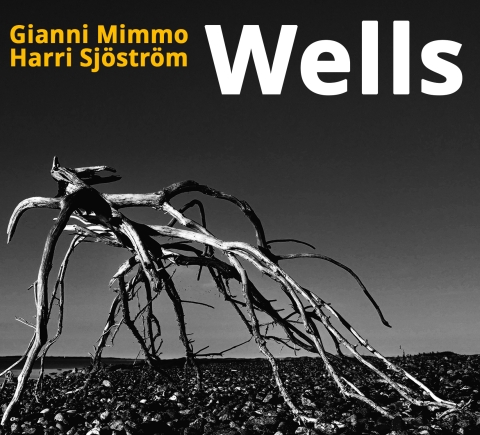Cultori e specialisti del sax soprano e frequenti collaboratori in formazioni più ampie, Gianni Mimmo e Harri Sjostrom stavolta sono in scena in un duetto improvvisato, arte della quale sono maestri, registrato al Teatro San Matteo di Piacenza —il 9 aprile 2022 —i primi tre brani al mattino, in privato, i rimanenti il pomeriggio, in concerto.
Per gli appassionati del suggestivo strumento, come chi scrive, il disco è un vero spettacolo: i suoni dei due strumenti si incalzano l'un l'altro, svolazzando e disegnando ora linee morbide e sinuose, ora scoppiettando, ora distorcendosi con armonici o impennandosi in sovracuti. Tutto questo con immensa libertà di movimento e avvalendosi delle tangibili diversità tanto timbriche —Sjöström utilizza anche il sopranino e alcune sordine, Mimmo ha un suono più caldo —quanto stilistiche —l'italiano tende a esprimersi su note più lunghe e a disegnare linee più ampie, il finlandese a effettuare fraseggi spigolosi e squittire.
La differenza delle due voci, che impreziosisce l'intero lavoro, si apprezza "in purezza" in "Spark Strategy" e "Ondina," interpretate in solitudine la prima da Sjöström, che vi si produce in fraseggi via via sempre più frammentati e ritmici, la seconda da Mimmo, che viceversa vi disegna linee purissime e, nella loro libertà, dal forte lirismo, tutt'altro che sminuito dall'ampio uso di armonici.
Altrove queste differenze vengono messe virtuosamente in relazione, con risultati diversi: in "Remoteness" entrambe le voci s'impennano sulle note più alte, con effetti ipnotici, ma sfruttando la maggiore rotondità del suono dell'italiano; "Tear and Darn" vede una lunga introduzione lacyana di Mimmo, aperta e calda, sulla quale si inserisce dialogicamente Sjöström al sopranino con fraseggi ora ritmici, ora spigolosi, tutti su note più alte, con un contrasto molto acuto; di tenore simile "Signaling," aperta da squittii e armonici di Sjöström, che dopo un breve dialogo lasciano spazio a una più distesa meditazione solitaria di Mimmo e poi tornano a dialogare con tinte drammatiche, dove i timbri e le forme espressive si fanno più simili e si fondono.
Non mancano momenti più quieti, nei quali anche Sjöström si esprime in forma più estesa: è il caso del brano d'apertura, "Announcement," dialogo sereno nel quale i due si confrontano senza esasperare le differenze, o di "Recomandation," fittissimo scambio dal gusto quasi intimo, mentre la conclusiva "Encyclopedia at Glance," il brano più lungo, è anche un po' la sintesi del lavoro, iniziando in modo aperto, rimanendo per tutta la durata in dialogo serrato e includendovi anche accelerazioni, parossismi e forme espressive più estreme.
Ennesimo grande disco del sopranista pavese e della sua etichetta Amirani Records.
Album della settimana.

